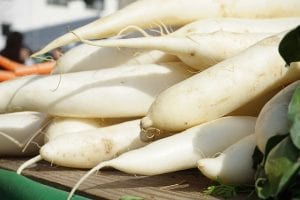Get To Know Cruciferous Vegetables – 3 New Vegetables To Try

Image courtesy of Pixabay
Cruciferous vegetables are vegetables of the family Brassicaceae such as cauliflower, cabbage, bok choy, broccoli, Brussels sprouts and similar green leaf vegetables. High in vitamin C and soluble fiber with multiple nutrients and phytochemicals, cruciferous vegetables are one of the dominant food crops worldwide.
In the fall, cruciferous veggies like Brussels sprouts and cauliflower are abundant. Perhaps you’d like to try something new? Allow me to introduce you to some cruciferous veggies you might not have tried.
Mizuna. Also known as Japanese mustard greens, mizuna has a rich, peppery flavor —it’s frequently compared to arugula or young mustard greens and can be enjoyed raw or cooked. The health benefits of eating mizuna includes improved eye, bone and immune health, as well as improved blood clotting and the potential for reduced cancer risk. You can buy mizuna at Whole Foods and other grocery retailers, or you can grow them yourself. Mizuna is hearty and can tolerate all kinds of conditions, making them easy to grow.
Daikon radish. Daikon is a mild-flavored winter radish usually characterized by fast-growing leaves and a long, white root. Use daikon radishes any way you would use a carrot. Daikon is believed to be beneficial for everything from respiratory issues to cancer prevention and weight management.
Rutabaga is a root vegetable that originated as a cross between the cabbage and the turnip. The leaves can be eaten. Rutabagas have sweet, orange-yellow flesh that is best mashed, roasted, steamed or sautéed. Rich in vitamin C, dietary fiber, potassium and antioxidant compounds, rutabagas look like turnips but are, in fact, sweeter.








